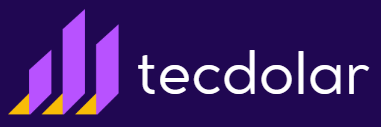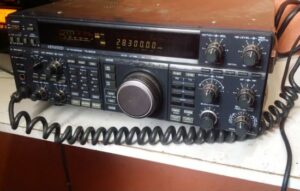The world around us is constantly accelerating. We live in an era where information flows in real time, where geographical barriers dissolve with a click, and the expectation of seamless connectivity has become the norm.
In this scenario of digital transformations, the 5G It emerges not only as a technological evolution, but as a true revolution.
It promises unimaginable speeds, nearly imperceptible latency, and the ability to connect an unprecedented number of devices, opening the door to a future where augmented reality, advanced telemedicine, and smart city automation will be part of our daily lives.
You've probably heard about 5G before, and maybe even own a compatible smartphone. But if the experience still doesn't live up to your expectations, if the speeds don't seem all that "ultra," or if you feel a little lost on how to get the most out of this technology, you're not alone.
The promise of 5G is great, but like any new technology, there are nuances and sometimes small tweaks that can make all the difference. This is where apps come in. They're the tools that can help you demystify 5G activation, optimize your connection, and ultimately unlock the full potential that your device and the 5G network have to offer. Get ready to immerse yourself in this universe and transform your connectivity experience.
See also:
- Turn your phone into a portable projector
- Connection: Your Phone Always Connected to Open Wi-Fi
- Powerful Sound: Transform the Volume of Your Smartphone
- Instant English: Learn for Free and Have Fun
- Turn your cell phone into your ally: Monitor your glucose now
What is 5G and Why is it Important to You?
Imagine downloading a 4K movie in seconds, having crystal-clear video calls, playing online games without any lag, or even experiencing a virtual world so immersive that the lines between reality and digital dissolve. This isn't science fiction; it's the promise of 5GBut what exactly is this fifth generation of mobile technology, and why is it so crucial to your daily life?
5G goes far beyond just faster internet. It represents a quantum leap in the way data is transmitted. The main difference lies in three fundamental pillars: speed, low latency and massive capacity.
The speed 5G's speed is exponentially faster than 4G's, reaching peaks that can exceed gigabits per second. This means tasks that would previously take minutes, such as downloading large files or streaming high-resolution content, are now completed in seconds. For you, this means less time waiting and more time enjoying.
The low latency It's perhaps the most revolutionary feature. Latency is the delay between the moment a command is sent and the response received. In 5G, this latency is reduced to milliseconds, making real-time interactions truly possible.
Think of self-driving cars that need to react instantly to unexpected events, robotic surgeries controlled remotely with pinpoint precision, or even the difference between a perfect play and irritating lag in your favorite game. Low latency opens up a universe of possibilities for applications that demand immediate responses, transforming industries and the way we interact with technology.
Demystifying 5G Activation: Your Connection at Your Fingertips
The expectation is that 5G will be something magical, that when you turn on your phone in a coverage area, the ultra-fast connection will simply appear. In many cases, that's the reality. If you have a compatible device and a plan that includes 5G, your phone usually automatically connects to the available network. It's your smartphone's intelligence working to give you the best possible experience.
However, there are situations in which this transition isn't as seamless, or perhaps you want more control over your connection, verify whether you're really on 5G, or understand why, at times, your speed isn't as expected. This is where the importance of understanding how your device interacts with networks lies, and even more so, how some apps can act as your greatest allies.
It's crucial to understand that an app doesn't have the power to "create" a 5G network where one doesn't physically exist. If your carrier doesn't offer 5G coverage in your region or if your device isn't compatible with the technology, no software will be able to work around those infrastructure or hardware limitations. These apps actually function much more intelligently and usefully: they act as diagnosticians, optimizers, and monitors of your existing connection.
5G Mark: Taking Your 5G Experience to the Next Level
When we talk about optimizing and thoroughly understanding your 5G connection, one name that stands out in the application landscape is 5G MarkThis app was developed to be a robust and intuitive tool for those looking not only to measure, but also to understand and, to a certain extent, optimize the performance of their 5G network. It is positioned as an essential ally for those who want to ensure they are taking full advantage of the speed and low latency that this promising technology offers.
The beauty of 5G Mark lies in its ability to transform complex technical data into understandable information for the average user, without sacrificing the accuracy a tech enthusiast would expect. It's not just a speed tester; it's an information hub that empowers you to have a clear view of what's happening between your phone and the 5G network.
Detailed Features of 5G Mark
5G Mark offers a set of features that make it a complete tool for monitoring your connection.
Firstly, and perhaps the most used function, are the Speed Tests integrals. With it, you can accurately measure your speed of Discharge, Burden and, crucially, the Latency (ping)Download and upload speeds are metrics everyone knows: how fast you can download files or send data to the internet.
Latency, on the other hand, is the response time of your connection, measured in milliseconds. The lower the latency, the faster the response, which is vital for online gaming, lag-free video calls, and other real-time applications. 5G Mark performs these tests consistently, allowing you to monitor your network's performance over time.
Another powerful feature is the Real-Time Connection MonitoringWhile many apps only provide a snapshot of your speed, 5G Mark can monitor signal strength and network type (3G, 4G, 5G) as you move. This is incredibly useful for identifying coverage "blind spots" or areas where 5G signal quality is weaker, helping you better position yourself for an optimal connection.
The app also provides Detailed Information about the 5G Network you're using. This includes the frequency band (such as n78, n28, n3, etc.), signal strength in dBm (decibels per milliwatt), cell ID, and other technical metrics that, for the more curious, can offer a deep understanding of how your local network is performing. While this data may seem highly technical to some, it's valuable for diagnosing problems or understanding the quality of the infrastructure in your area.
How to Install and Use 5G Mark
Installing and starting to use 5G Mark is a fairly simple and intuitive process, regardless of whether you're an Android or iOS user.
For Android devices, the first step is to open the Google Play StoreIn the search bar, type "5G Mark" and look for the official app, usually with a recognizable logo. Once found, tap "Install" and wait for the download and installation. The process is quick and automatic, depending on your Wi-Fi or mobile data connection.
If you use a iPhone or iPad, the procedure is similar. Open the App Store, type "5G Mark" in the search bar, and select the appropriate app from the results. Tap "Get" and, if prompted, confirm the installation with your passcode, Face ID, or Touch ID. The app will automatically download and install on your device.
After installation, when you open 5G Mark for the first time, the app will probably ask for some permitsIt's crucial to grant these permissions, especially those for accessing your location and phone status. These permissions are necessary for the app to collect network data, identify your position for coverage maps (if available), and accurately perform speed tests. Without them, 5G Mark won't function properly.
Other Apps That Can Complement Your 5G Connection
While 5G Mark is a powerful and comprehensive tool for your 5G experience, the network application ecosystem offers other options that can complement its use or meet specific needs. Knowing these alternatives or add-ons can further enrich your understanding and control over your connection.
Speedtest by Ookla
When you think about internet speed tests, Speedtest by Ookla It is, without a doubt, one of the most recognized and trusted names in the world. Present on virtually all operating systems, it has become the gold standard for millions of users who want to check their connection's performance.
Their characteristics They are notable for their simplicity and effectiveness. Speedtest offers highly accurate download and upload speed tests, as well as measuring latency (ping and jitter), which is essential for real-time applications. One of its major advantages is its vast network of servers distributed around the world.
This ensures more accurate testing, as the app can connect to the server closest to you and optimized for your location.
It also keeps a detailed history of all your tests, allowing you to track your connection performance over time. For those who value security and privacy, Speedtest by Ookla also includes a free VPN feature that can be activated to protect your browsing, although using it may affect your connection speed.
For wear Speedtest, simply download it from the Google Play Store or the App Store. Upon opening the app, a large "Start" or "Go" button will be visible. Tap it, and the app will do the rest, displaying the results clearly and objectively in a matter of seconds. The clean and intuitive interface makes it ideal for those looking for a quick and reliable measurement without complications.
OpenSignal
OpenSignal It goes beyond a simple speed test, positioning itself as a coverage mapping and network analysis tool based on user experience. It's especially useful for those who want to understand carrier coverage in different locations.
Among its characteristics, highlight the operator coverage mapsOpenSignal collects data from users around the world, creating detailed maps showing where 3G, 4G, and 5G networks are available, based on the real-life experiences of millions of people. This allows you to visualize the signal quality at home, at work, or anywhere you plan to visit. In addition to maps, it offers robust speed tests, latency measurements, and even a "video experience" analysis, which evaluates how well videos stream on your connection. The community of users contributing data makes OpenSignal a rich source of information on real-world mobile network performance.
For wear After installing OpenSignal, you'll need to grant location permission so it can map coverage in your area and contribute to the global data. Explore the maps to see the coverage of your carrier and others in your region. To perform a speed test, simply select the appropriate option in the app's interface and wait for the results. Detailed data visualization and interactive maps make OpenSignal a valuable tool for those seeking a deeper understanding of network infrastructure.
Network Cell Info Lite
For users who want more technical and detailed information about the cellular network they are connected to, Network Cell Info Lite It's an excellent option. It doesn't just focus on speed, but also on the "health" of your connection.
Their characteristics These include real-time displays of information such as network type (GSM, UMTS, LTE, NR for 5G), signal strength in dBm, Cell ID, Location Area Code (LAC), and Mobile Network Code (MNC). It also presents graphs of signal strength over time, allowing you to observe fluctuations and identify patterns. This wealth of detail is particularly useful for troubleshooting connection issues, understanding why your signal is weak in certain areas, or checking if you are actually connected to a specific 5G tower.
For wear Network Cell Info Lite, simply open it after installation. The main screen will display a dashboard with all the technical information in real time. There's no "speed test" button in the traditional sense; instead, it passively monitors your connection and presents the data. It's a tool more oriented toward diagnostics and a deeper understanding of the network infrastructure your phone is using, making it more useful for users with a certain level of technical interest.
Meteor
Meteor by OpenSignal is a speed test app that goes beyond simple measurement, offering an analysis of how popular apps perform on your current connection.
Their characteristics The main tests are the download, upload and ping speed tests, but their differential lies in the ability to evaluate the performance of specific applications. For example, after a speed test.
Meteor can indicate whether your connection is "Excellent," "Good," or "Poor" for apps like YouTube, Netflix, WhatsApp, Spotify, Google Maps, and more. This offers a much more practical perspective on how your internet connection affects daily usage, rather than just raw numbers. It also keeps a history of your tests and allows you to compare performance at different times and locations.
For wear Meteor: the process is the same: download, install, and grant the necessary permissions. On the main screen, you can start a speed test. Once completed, the results will be presented along with performance benchmarks for the selected apps.
Providing immediate and relevant feedback on the quality of your connection for the tasks you do most.
Each of these apps offers unique and valuable insight into your 5G connection. 5G Mark is a great starting point for comprehensive monitoring, while Speedtest by Ookla is ideal for quick and accurate tests. OpenSignal excels at visualizing carrier coverage, Network Cell Info Lite is for the more technically inclined, and Meteor offers practical insight into app performance. Using them together can give you unprecedented control over your 5G experience.
Essential Tips to Optimize Your 5G Connection
Having a 5G-compatible smartphone, a suitable data plan, and monitoring apps is a great start. But to ensure you're truly getting the most out of your ultra-fast connection, a few simple practices can make a big difference. 5G is powerful, but like any technology, it benefits from an optimized environment.
First, and perhaps most basic, is keep your mobile software always up to date. Updates to your device's operating system (iOS or Android) and firmware frequently include connectivity improvements and optimizations for the latest networks, such as 5G. Ignoring these updates could mean missing out on important performance improvements.
In second place, Make sure your data plan really supports 5GIt seems obvious, but many people have 5G devices, but their carrier plans are still limited to 4G or require specific activation. Check with your carrier to make sure your plan is 5G-enabled and that there are no speed or deductible limits that could impact your experience.
Third, Check 5G coverage in your areaUse the coverage mapping apps we mentioned, such as OpenSignal, or the coverage maps provided by the carriers themselves. 5G is still expanding in many regions, and the signal can vary considerably between different neighborhoods or even within the same street. Knowing where the signal is strongest can help you position yourself for the best connection.

Conclusion: The Future of Connectivity Is in Your Hands
We've reached the end of our journey through the world of 5G and the applications that can transform your experience with this revolutionary technology. It's clear that 5G isn't just an evolution; it's a turning point that redefines what we expect from mobile connectivity, with speeds that challenge what was previously thought possible and latency that opens the door to innovations in a variety of areas.
In this article, we demystify 5G, explore the crucial role of tools such as 5G Mark and other complementary apps, and we provide a practical guide to installing, using, and optimizing your connection. The power to monitor, understand, and fine-tune your 5G experience is, in fact, in your hands. You don't need to be a networking expert to get the most out of this technology; all you need is the right tools and the knowledge to use them.
By adopting these apps and following optimization tips, you'll not only ensure a faster and more stable connection.
But also by empowering you to explore all the possibilities 5G has to offer, from immersive entertainment to advanced productivity. The future of connectivity isn't far off; it's already here, and with the right tools, you can be a protagonist in this new era.









